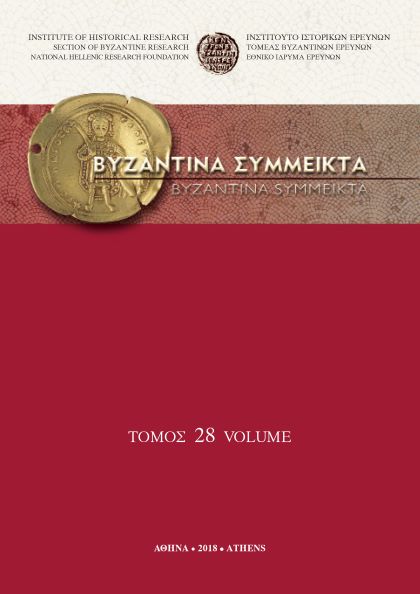Οι πόλεμοι μεταξύ του Νικηφόρου Φωκά και των Αράβων.
Abstract
This article attempts to present the conflicts between the Byzantines and the Arabs, in the period that Nicephorus Phocas was active on the eastern front. It aims to fill certain gaps in the history of this period in the light of medieval Arabic sources.
Arab historiographers and geographers recount the deeds of Nicephorus Phocas, both as Domestic and as Emperor, informing us of how the Islamic world reacted to Byzantium's renewed aggressiveness.
Except for the military sector, historians can benefit from the information provided by the Arabic sources regarding internal affairs of the Byzantien Empire, such as the bad relations of Nicephorus Phocas with the circle of Emperor Romanos II or the active role of the Armenians in the wars of that period.
This study focuses also on all the conflicts of Nicephorus Phocas, both with the Hamdanids and with the Arabs of Sicily, but allso on the campaigns against Crete and Cyprus. Particular attention is given to the demeanor of the Byzantine Emperor in these operations, as seen by the Arabic sources.
στρατιωτικές συγκρούσεις Βυζαντινών και Αράβων την εποχή του Νικηφόρου Β' Φωκά (963-969) σύμφωνα με τις αραβικές πηγές.Article Details
- How to Cite
-
ΤΑΚΙΡΤΑΚΟΓΛΟΥ Κ. (2015). Οι πόλεμοι μεταξύ του Νικηφόρου Φωκά και των Αράβων. Byzantina Symmeikta, 25, 57–114. https://doi.org/10.12681/byzsym.1121
- Issue
- BYZANTINA SYMMEIKTA 25
- Section
- Articles

This work is licensed under a Creative Commons Attribution-NonCommercial-ShareAlike 4.0 International License.
Copyright: The copyright for articles in this journal is retained by the author(s), with first publication rights granted to the journal. By virtue of their appearance in this open access journal, articles are free to use (with the exception of the non-granted right to make derivative works) with proper attribution for non-commercial uses (licence Creative Commons 4.0). NHRF retains the worldwide right to reproduce, display, distribute, and use articles published in BYZANTINA SYMMEIKTA in all formats and media, either separately or as part of collective works for the full term of copyright. This includes but is not limited to the right to publish articles in an issue of the Journal, copy and distribute individual reprints of the articles, authorize reproduction of articles in their entirety in another NHRF publication, and authorize reproduction and distribution of articles or abstracts thereof by means of computerized retrieval systems.




